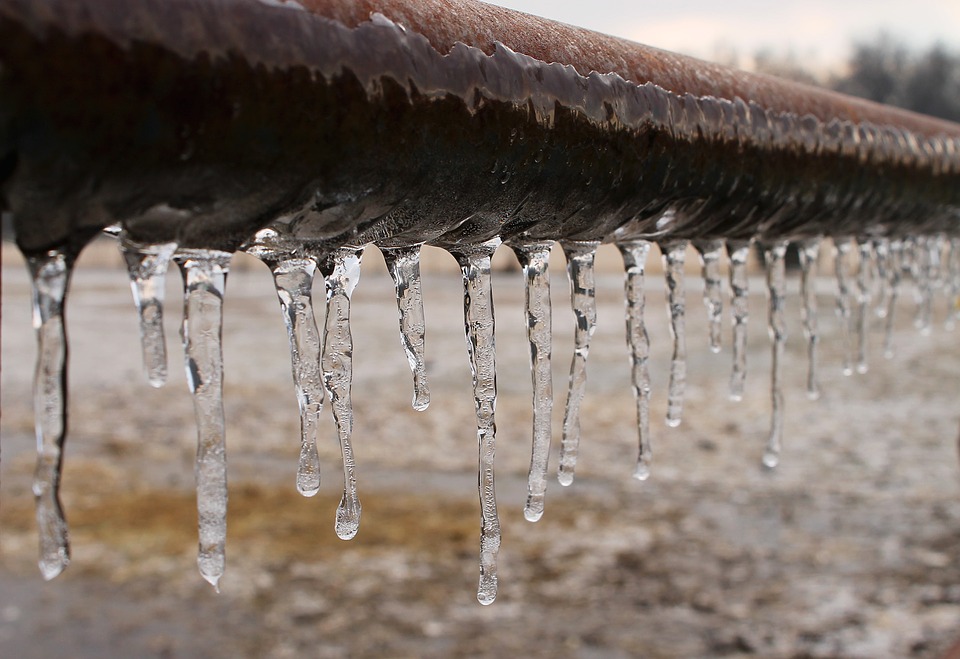Protecting Pipes from Cold Weather Damage: Key Approaches
Protecting Pipes from Cold Weather Damage: Key Approaches
Blog Article
Have you been looking for information and facts involving Helpful Tips to Prevent Frozen Pipes this Winter?

Cold weather can damage your plumbing, especially by freezing pipes. Right here's how to avoid it from happening and what to do if it does.
Introduction
As temperature levels drop, the danger of icy pipes boosts, possibly resulting in pricey repairs and water damage. Recognizing how to prevent frozen pipelines is critical for property owners in chilly environments.
Avoidance Tips
Shielding vulnerable pipes
Wrap pipes in insulation sleeves or utilize warm tape to secure them from freezing temperature levels. Concentrate on pipelines in unheated or external locations of the home.
Home heating methods
Maintain interior areas effectively heated up, especially areas with pipes. Open up cupboard doors to enable warm air to circulate around pipelines under sinks.
Just how to determine frozen pipes
Seek reduced water flow from faucets, uncommon odors or noises from pipelines, and visible frost on exposed pipes.
Long-Term Solutions
Architectural changes
Take into consideration rerouting pipes far from outside wall surfaces or unheated areas. Include additional insulation to attic rooms, basements, and crawl spaces.
Upgrading insulation
Invest in high-grade insulation for pipes, attics, and walls. Proper insulation aids keep regular temperature levels and lowers the threat of icy pipes.
Safeguarding Outdoor Plumbing
Garden hoses and exterior taps
Disconnect and drain yard hose pipes before winter months. Set up frost-proof spigots or cover exterior faucets with shielded caps.
Comprehending Frozen Pipelines
What causes pipelines to freeze?
Pipelines ice up when subjected to temperature levels listed below 32 ° F (0 ° C) for expanded periods. As water inside the pipes freezes, it expands, putting pressure on the pipe wall surfaces and possibly creating them to break.
Dangers and problems
Frozen pipes can lead to water supply disruptions, residential or commercial property damages, and expensive repairs. Ruptured pipelines can flood homes and create considerable structural damage.
Indicators of Frozen Water Lines
Identifying icy pipes early can stop them from rupturing.
What to Do If Your Pipes Freeze
Immediate activities to take
If you think icy pipes, maintain faucets open up to alleviate stress as the ice melts. Make use of a hairdryer or towels soaked in hot water to thaw pipes slowly.
Conclusion
Protecting against icy pipes needs aggressive procedures and quick actions. By understanding the causes, indicators, and preventive measures, property owners can protect their pipes during winter.
5 Ways to Prevent Frozen Pipes
Drain Outdoor Faucets and Disconnect Hoses
First, close the shut-off valve that controls the flow of water in the pipe to your outdoor faucet. Then, head outside to disconnect and drain your hose and open the outdoor faucet to allow the water to completely drain out of the line. Turn off the faucet when done. Finally, head back to the shut-off valve and drain the remaining water inside the pipe into a bucket or container. Additionally, if you have a home irrigation system, you should consider hiring an expert to clear the system of water each year.
Insulate Pipes
One of the best and most cost-effective methods for preventing frozen water pipes is to wrap your pipes with insulation. This is especially important for areas in your home that aren’t exposed to heat, such as an attic. We suggest using foam sleeves, which can typically be found at your local hardware store.
Keep Heat Running at 65
Your pipes are located inside your walls, and the temperature there is much colder than the rest of the house. To prevent your pipes from freezing, The Insurance Information Institute suggests that you keep your home heated to at least 65 degrees, even when traveling. You may want to invest in smart devices that can keep an eye on the temperature in your home while you’re away.
Leave Water Dripping
Moving water — even a small trickle — can prevent ice from forming inside your pipes. When freezing temps are imminent, start a drip of water from all faucets that serve exposed pipes. Leaving a few faucets running will also help relieve pressure inside the pipes and help prevent a rupture if the water inside freezes.
Open Cupboard Doors
Warm your kitchen and bathroom pipes by opening cupboards and vanities. You should also leave your interior doors ajar to help warm air circulate evenly throughout your home.
:strip_icc()/snow-outdoor-faucet-pipes-4af65d1e5e904fb1aa7bf74071fe5d89.jpg)
I'm very intrigued by Winter Plumbing Precautions: Preventing Frozen Pipes and I'm hoping you appreciated the new blog post. Don't hesitate to take the opportunity to share this blog posting if you liked it. I cherish reading our article about Prevent Frozen Pipes .
Click Here Report this page